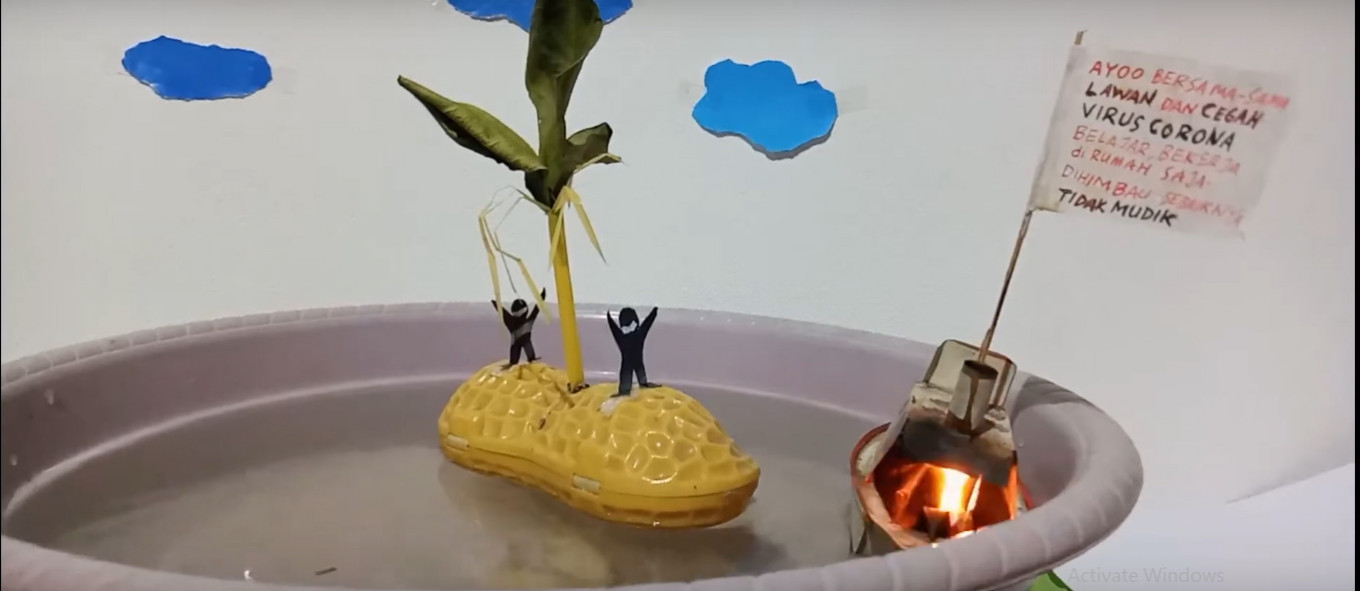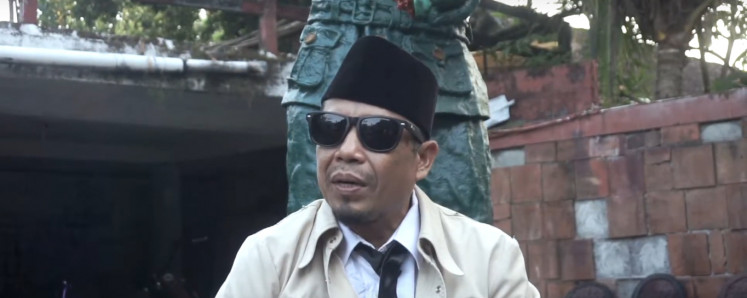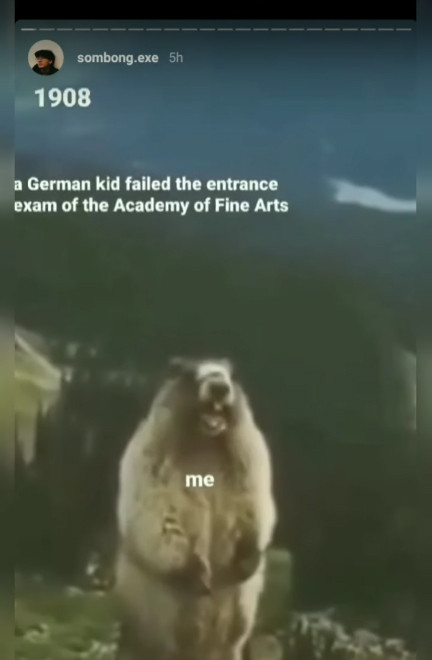Popular Reads
Top Results
Can't find what you're looking for?
View all search resultsPopular Reads
Top Results
Can't find what you're looking for?
View all search results‘Manifesto VII’ takes a peek at public's pandemic perception
When something becomes a defining moment in the zeitgeist, arts and culture will inevitably revolve around it, especially when it is a pandemic affecting billions.
Change text size
Gift Premium Articles
to Anyone
W
hen something becomes a defining moment in the zeitgeist, arts and culture will inevitably revolve around it, especially when it is a pandemic affecting billions.
Despite the closure of public places due to safety procedures, the arts have continued to flourish in one place where the virus will not be able to ravage: the internet.
While virtual exhibitions have become common as part of the so-called "new normal", the seventh edition of the National Gallery of Indonesia's biennial contemporary art exhibition Manifesto marks the first time it has been held online.
Accessible on the National Gallery of Indonesia website at galnasonline.id until Dec. 6, Manifesto VII exhibits 217 works by 204 artists, selected from an open call process involving more than 300 submissions.
As COVID-19 has dominated conversations and airwaves, its cultural ramifications are significant enough that organizers of Manifesto VII have made it the exhibition's central theme, citing the need to capture the development of the arts as a result of widespread societal change.
Because of this, the artist lineup has changed as well. Whereas previous editions only involved invited artists, the seventh iteration allowed members of the public to participate. The medium of video was also considered due to the format’s ease in representing the creators’ ideas and viewpoints in a virtual setting.
Visitors landing on the National Gallery’s website will be directed to a banner linked to the Manifesto’s landing page, where they are faced with a plethora of images in a loop. These images are previews of the video artwork, which can be viewed by clicking on the image.
Interestingly, the sequencing of the images is random for every visit and page reload, and combined with the looping nature of the previews, can be a tad overwhelming. However, one can see it as a sort of metaphor for information overload during the pandemic, which can also be jarring and disorienting to some.
On any given video’s page, visitors are then able to view the works in their entirety and at the same time access the exhibition’s directory, such as the curatorial statement and list of entries.
Rizki A. Jaelani, a member of the curatorial team, explained that the featured artworks can be divided into two categories – by artists and non-artists.
"The artists showcased complex works filled with metaphors for the relationship between the pandemic and values outside of human understanding. Non-artists, composed of members of the public of various backgrounds from doctors to stay-at-home moms, highlighted two types of responses to the pandemic,” he said.
"First, by showcasing the struggle of adapting to the changes happening. The second is by highlighting the pandemic as an exhilarating situational report.”
Going into the categories will allow viewers to explore the different approaches to art and the pandemic, from personal musings, recorded performance art, to fully acted skits.
Rizki concedes that “pandemic” is a very broad topic with a wide variation of possible perspectives but he and the curatorial team considered the theme to be more than just a health issue with wider implications for social, political, economic and cultural contexts.
“We chose the pandemic [as the concept], not the virus. From the submitted works, we gathered many possibilities, but after further discussion, we decided on five central themes – based on how the creators communicate their ideas on the pandemic,” he said.
Highlights include Yogyakarta-based Stefan Buana’s Go To Hell Your Covid, drawing on founding father Sukarno’s infamous phrase “go to hell with your aid”. While the original phrase was a sign of defiance and independence toward foreign interference, the present-day context was toward Covid-19 as well as its perceived origins: human greed.
Go To Hell Your Covid by Stefan Buana. (National Gallery of Indonesia/-)In Igi Anjangbiani’s only for private views, the video takes the form of Instagram Stories – temporary posts that disappear within 24 hours. With self-deprecating jabs and sometimes nonsensical elements typical of Generation Z humor, Igi questions the legitimacy and exclusivity of video art in a format that is both familiar and interactive in its original context.
Only for private views by Igi Anjangbiani (National Gallery of Indonesia/-)Also notable is Thomas Vebrian Haryadi’s PATIENT # PATIENCE, an experimental narrative featuring wooden puppets enacting an interaction between a medical worker in a hospital ward and two of his patients. The story portrays the pandemic at its bleakest: despair and feelings of helplessness, but at the same time brings with it a message of hope and perseverance against all odds.
While there is a certain distinction in attending in-person exhibitions, current situations have made it next to impossible to hold or even attend one.
Even so, an online exhibition has the added benefit of allowing a longer exhibition time, as the museum does not have to make way for the next event. Artists will also appreciate a wider reach, as anyone with an internet connection will be able to view their artworks.
“From ‘Manifesto’, we can explore issues that we can discuss in the coming times. I hope the exhibition can raise optimism that no matter how difficult the situation might seem, the arts can still flourish,” Rizki said.












